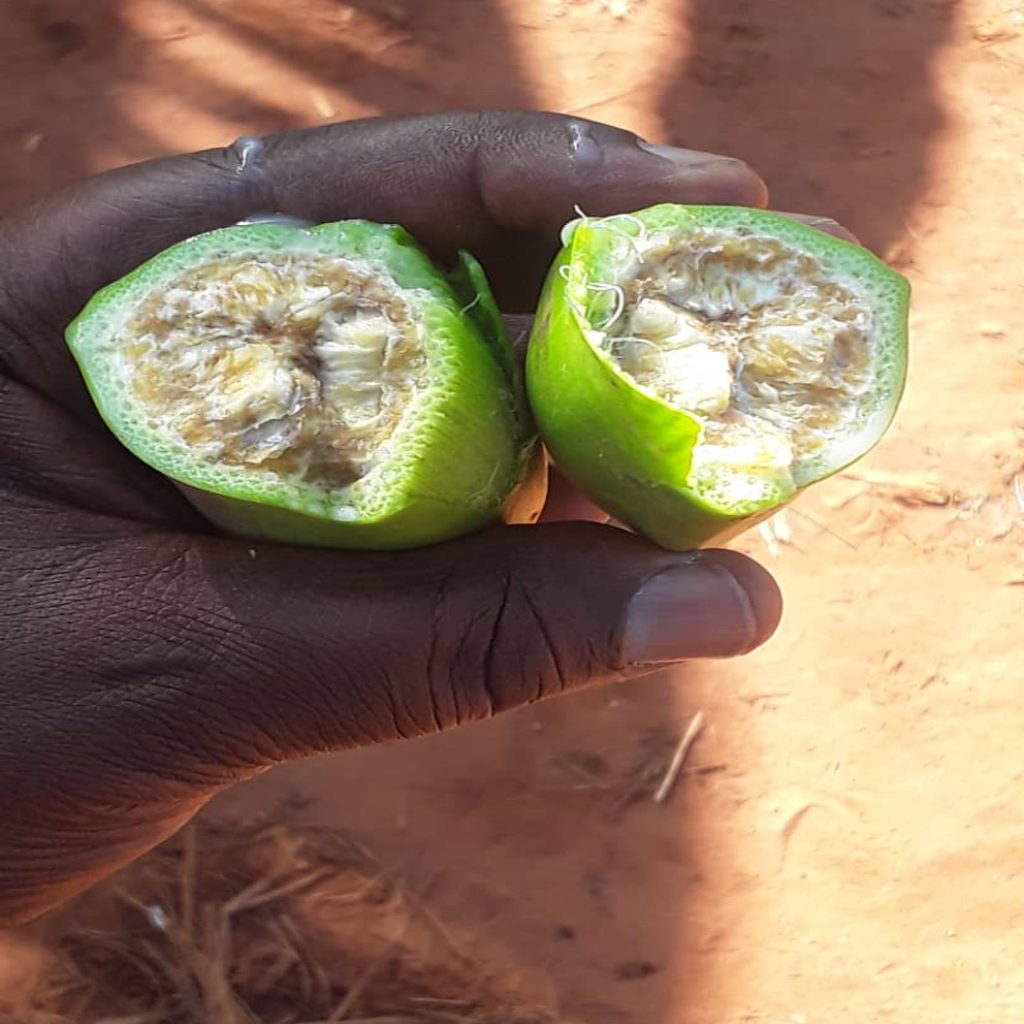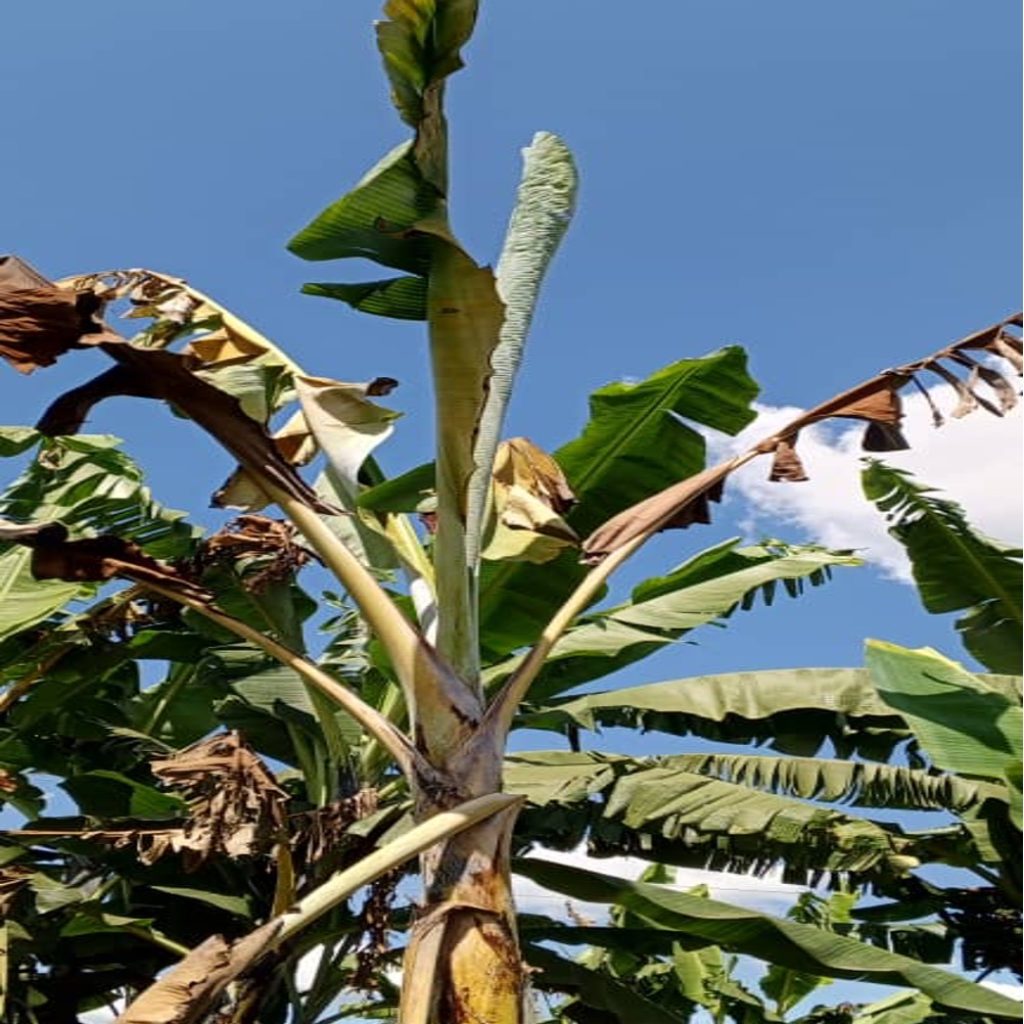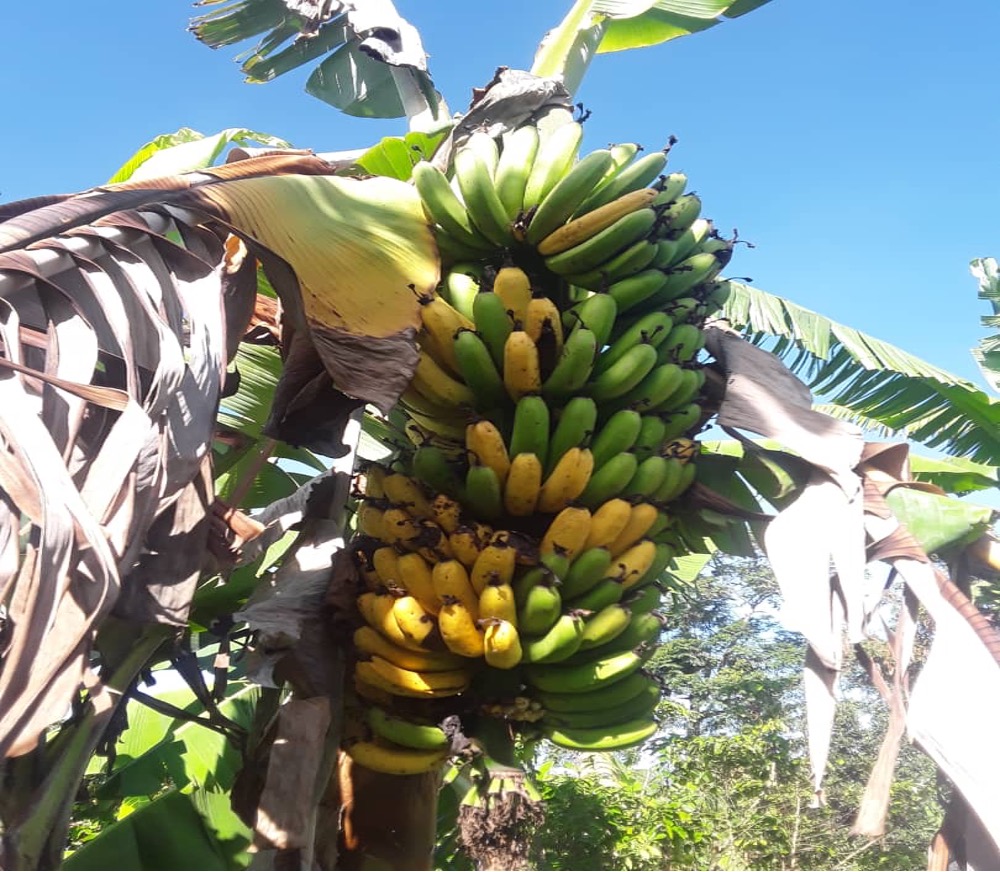Bukoba, Tanzania – In the misty highlands of Kagera, banana trees used to sway like banners of prosperity. From the banks of Lake Victoria to the ridges of Karagwe, they shaped the region’s landscapes and lives. But now, fields lie fallow, homesteads are ringed by dying plants, and farmers speak of a slow, bitter death, not of people, but of a crop so central to their identity that its loss feels like losing family.
The culprit is Banana Xanthomonas Wilt (BXW), a bacterial disease that has swept through the region in waves, leaving devastation in its wake. It is killing more than bananas; it’s threatening livelihoods, eroding culture, and exposing the widening gap between scientific innovation and policy action in sub-Saharan Africa.
“We used to eat bananas for breakfast, lunch, and dinner,” says Datifrida Kokuhirwa, a smallholder in Kyamarange village. “Now we buy them from the market, when we can afford them. But they’re not ours. They’re not from here.”
In Kagera, bananas are more than food. They are tradition, currency, status, and memory. Losing them has triggered a cultural and nutritional unravelling, one that may soon become familiar in other parts of the world unless action is taken.


The Banana That Fed a Region
Tanzania is Africa’s second-largest banana producer after Uganda, with an annual production of over 3 million tonnes, most of it grown by small-scale farmers in Kagera, Kilimanjaro, Mbeya, and Arusha. In Kagera alone, banana-based farming systems have supported over 70 percent of rural households for generations.
Here, more than 20 distinct banana varieties have evolved over time including ‘Echakyala’ for cooking, ‘Mbire’, prized for its resilience and brewing quality; ‘Nkonjwa’, used in festive cooking; and ‘Akanana’, a rare cultivar used in royal rituals. These local bananas are central to both food sovereignty and cultural preservation, grown in home gardens, intercropped with coffee, and passed down like heirlooms.
“Bananas are our everything,” says Mr. David Rweikiza Rwenyagira, The OFAB Media award Winners in Tanzania and native to Kagera “They are deeply tied to our ecology, history, and economy. But they are vanishing before our eyes.”
Anatomy of a Crisis
BXW, caused by Xanthomonas vasicola pv. musacearum, first appeared in Ethiopia in the 1960s. Since the early 2000s, it has spread through Uganda, Rwanda, Burundi, the Democratic Republic of Congo and now Tanzania.
The bacteria infects banana plants through natural openings or wounds, often transmitted by unsterilized tools, insects, and infected planting materials. Once inside, the disease multiplies rapidly, causing wilting, fruit rot, and plant death. In many infected fields, entire banana groves are lost within a single season.
In Tanzania, where awareness remains low and farmers often lack access to clean planting materials, the spread has been especially severe. Datifrida Kokuhirwa lost her entire plot in 2021. “We dug them out, burned them, and cried,” she says. “Some of those banana lines were older than me.”
The ripple effects go far beyond the fields. In Kagera, bananas aren’t just food—they’re tradition, livelihood, and lifeline. As the crop withers, so too does the region’s nutritional stability. Once a dietary staple, bananas are now priced beyond the reach of many families. Malnutrition rates especially among children are rising, placing the region among the country’s hardest hit. But it’s not just meals that are vanishing. Banana-based foods and brews, integral to weddings, funerals, and naming ceremonies, are disappearing from cultural life. For women, the crisis strikes even deeper. They have long been the backbone of banana farming and processing. Now, with fields abandoned and markets shrinking, many have lost their primary source of income and with it, their social standing and economic freedom.
“We are not just fighting a disease,” says Mr. Lous Baraka, Regional Agricultural Officer. “We are fighting for a way of life.”
Science Offers Hope — But Policy Holds the Key
Across East Africa, scientists are rising to meet the banana crisis. At Uganda’s National Agricultural Research Laboratories (NARL) and Kenya’s branch of the International Institute of Tropical Agriculture (IITA), researchers have made significant breakthroughs. Using a mix of conventional breeding, genetic modification, and CRISPR gene-editing, they have developed banana varieties that can resist deadly diseases like BXW without sacrificing yield or the taste local communities know and trust.
One of the most promising initiatives is the Banana21 project, which has produced genetically modified (GM) bananas with strong resistance to BXW. In Kenya, these varieties have successfully passed biosafety assessments and are nearing readiness for wider deployment offering hope to farmers facing the same threats as their Tanzanian counterparts.
Yet in Tanzania, the path from lab to farm remains blocked.
“Our scientists have the expertise. The tools exist. But without an enabling policy framework, we’re unable to take the next step,” explains Dr. Philbert Nyinondi, a long-time observer of the biotechnology landscape in East Africa. “Caution and misinformation around GMOs have stalled progress, and it’s farmers who ultimately pay the price.”
Tanzania’s Biosafety Regulations of 2009, amended in 2015, place tight restrictions on the commercialization of genetically modified crops. This has a chilling effect on investment in research, making it difficult for local scientists to test or adapt disease-resistant varieties for Tanzanian conditions. Even when breakthroughs happen elsewhere, researchers here are unable to move forward knowing that the products may never reach farmers’ fields.
This growing gap between scientific potential and regulatory readiness has serious implications. As banana diseases spread and yields decline, smallholder farmers who form the backbone of Tanzania’s food system are left with fewer tools to protect their crops and livelihoods.
Conserving What’s Left — A Race Against Time
In the cradle of East Africa’s banana culture, something precious is quietly slipping away. For generations, Kagera farmers have cultivated an astonishing variety of banana types, many found nowhere else on earth. But as disease, climate stress, and economic hardship reshape the agricultural landscape, these traditional cultivars are vanishing faster than science can document them.
Elders in the villages still speak of the names of varieties that carry the weight of tradition, taste, and centuries of agronomic wisdom. Yet these varieties are disappearing from farms, from memory, and soon, perhaps, from existence.
This isn’t just a cultural loss. It’s a genetic emergency.
“If we lose banana landraces in Kagera,” says a researcher at Sokoine University of Agriculture (SUA), “we lose the raw material for tomorrow’s solutions – disease resistance, climate adaptation, better nutrition. Once they’re gone, they’re gone.”
Meanwhile, farmers under pressure are turning to crops like maize and cassava. These alternatives offer short-term security, but they can’t replace the banana’s deep cultural and nutritional roots in the region. The result is a quiet but profound transformation, one that threatens not just food systems, but identities.
It’s clear that science cannot stand alone. What’s needed is a coordinated national response, one that bridges science, policy, and community.
- Update biosafety laws to allow evidence-based approvals for GM and gene-edited crops.
- Invest in national banana research, from early diagnostics to clean seed systems and farmer education.
- Create regional gene banks linking farmers, researchers, and policymakers to safeguard banana biodiversity.
- Rebuild trust in science, through transparent public engagement and communication campaigns that debunk fear and misinformation.
“This isn’t about miracles,” says Dr. Philbert Nyinondi. “It’s about vision. About courage. We must stop treating science as a threat and start embracing it as a partner – one that can help us preserve the past and feed the future.”
Lessons for the World
Bananas are a global commodity. Over 400 million people in 135 countries depend on them. They are the most consumed fruit in the world and an essential source of calories for millions.
Yet the industry is under siege. While BXW devastates East Africa, Panama Disease Tropical Race 4 (TR4) is spreading through Asia and Latin America, threatening the Cavendish banana, which makes up 99% of global banana exports and has no natural immunity to TR4.
What’s happening in Tanzania today could happen in Ecuador, the Philippines, or Brazil tomorrow. The monoculture model of banana production driven by market demands and global supply chains has left the crop vulnerable. And public resistance to biotechnology has hampered efforts to build resilience.
In this sense, Kagera is not a local anomaly. It is the front line of a global problem.
Looking Forward: A Call to Act
Tanzania’s banana crisis is about more than food. It is about sovereignty, survival, and science. It is about the knowledge locked in local cultivars, the resilience offered by biotechnology, and the urgency of connecting policy to people.
This story is not over. In villages like Kigarama and Bugandika, farmers are experimenting with new ways to control disease —sterilizing tools, rotating crops, planting native herbs. Researchers continue their work in labs and greenhouses. Elders still sing banana songs, hoping their grandchildren will one day know the taste of their traditional banana.
But time is running out.
If action is delayed, Tanzania will lose more than a fruit. It will lose stories, identities, and futures.
Let Kagera be the alarm. Let this be the moment that science, policy, and people come together — not just to save a banana, but to protect a legacy.

